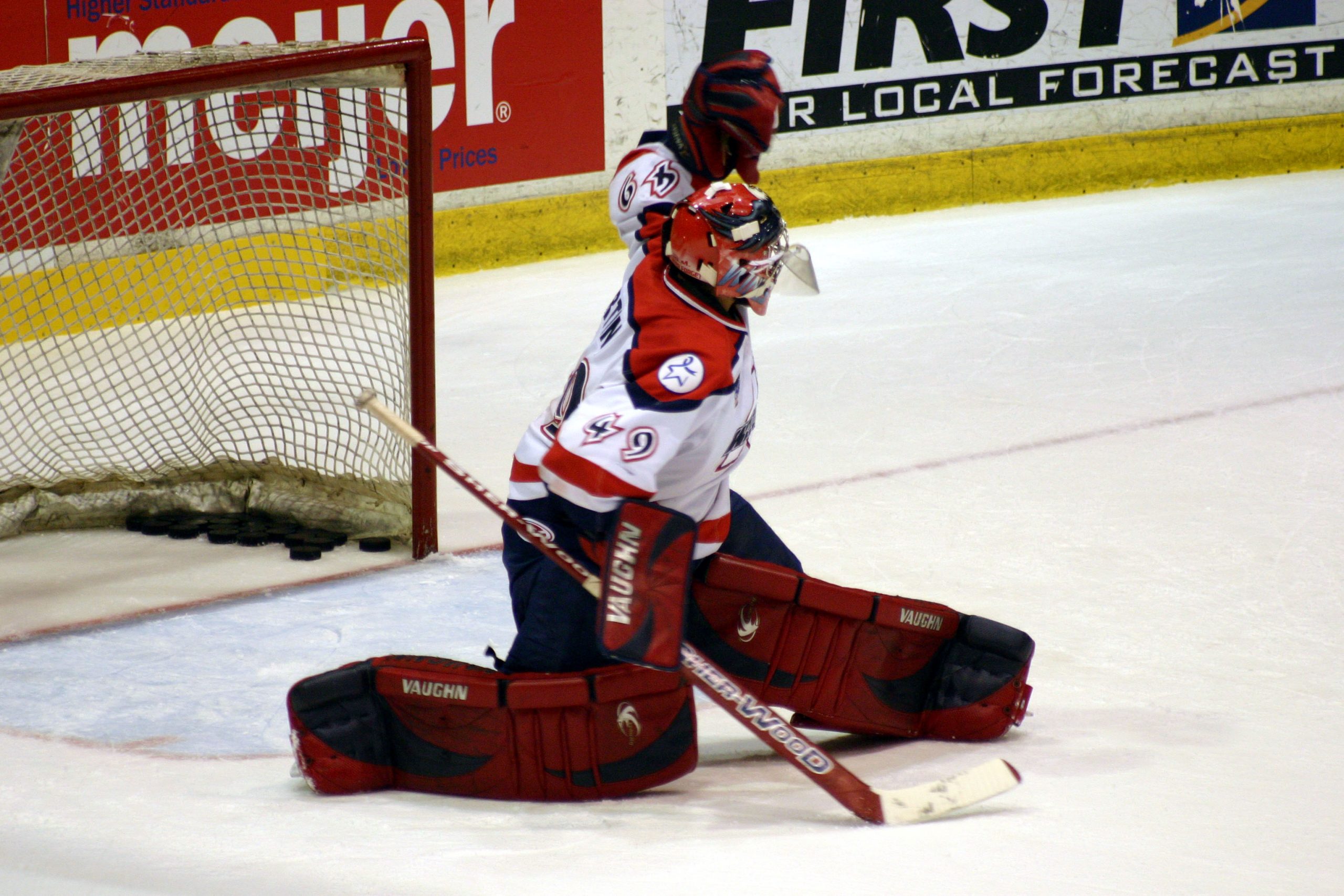
Ice hockey is a sport that places a great deal of stress on the hip and pelvic girdle. Injuries such as groin strains and athletic pubalgia (sports hernia) are just two of the common causes of lost time due to injury in ice hockey. For this reason, ice hockey players would benefit greatly from performing some off ice mobility and flexibility work prior to on ice training and competition.
Recently, I had to design a warm up for an ice hockey athlete who I worked with this past off-season. This particular ice hockey player is a division 3 athlete who was looking for a pre-game and pre-practice warm up prior to getting on the ice. He wanted something simple to do to augment his on ice activities and prevent any hip or groin problems during the season.
Improving mobility in his hips is the main focus of the off ice routine because it is common for ice hockey players to sustain injuries in this region. This particular routine consists of the following warm-up components:
1. Soft tissue release (foam roller)
2. Dynamic flexibility
3. Static stretching
4. Neuromuscular excitation
After performing the off ice portion of the warm up, he goes out to the ice and gradually builds up the intensity of his skating. For the most part, I allow him to take the lead on what to do once he is on the ice. My general recommendation to him is to work up to hard skating over a period of 10–15 minutes. This general increase in intensity will involve both the speed of his skating and an increase in the frequency of change of direction and starting and stopping.
Here is the actual routine that the athlete performs:
1. Foam roll IT band X 15
2. Foam roll groin X 15
3. Rollover to v-sit X 10
4. Three-way groin stretch X 15 seconds each
5. Hip circles X 10
6. Wide mountain climbers X 10
7. Groiners X 10
8. 90/90 piriformis X 15 seconds
9. Lunge jumps X 5 each side
10. Cossak squat X 5 each side
As you can see, I addressed each of the following goals with the activities listed. I have the athlete begin with foam rolling the adductors and the IT band. Foam rolling helps to decrease the nervous system input, which causes these muscles to become tight and overactive. By performing the foam rolling first, the athlete is able to work into the other warm-up activities more easily. The static stretches listed are primarily performed to lengthen the other commonly overactive muscles in the hip and pelvic region (adductors and piriformis).
The mobility movements selected assist with dynamically stretching and mobilizing soft tissue structures while also helping to warm up and nourish the joints. The lunge jumps further contribute to increased preparation of the nervous system prior to activity. This movement also contributes to mobility around the hip region. I ask this athlete for feedback to see how he feels during practices and games and gauge whether or not adjustments need to be made.
This is a brief warm up that can be done in a short period of time and doesn’t require much space. The athlete can even perform this warm up in the locker room prior to skating. After 3–4 weeks, I will change up some of the activities while still addressing the goals stated earlier. As with any form of training, giving the athlete new movement patterns will help to prevent him from accommodating to the routine provided. This will further help to prevent any overuse problems that he may experience from repetitive activities as a result of his sport.









